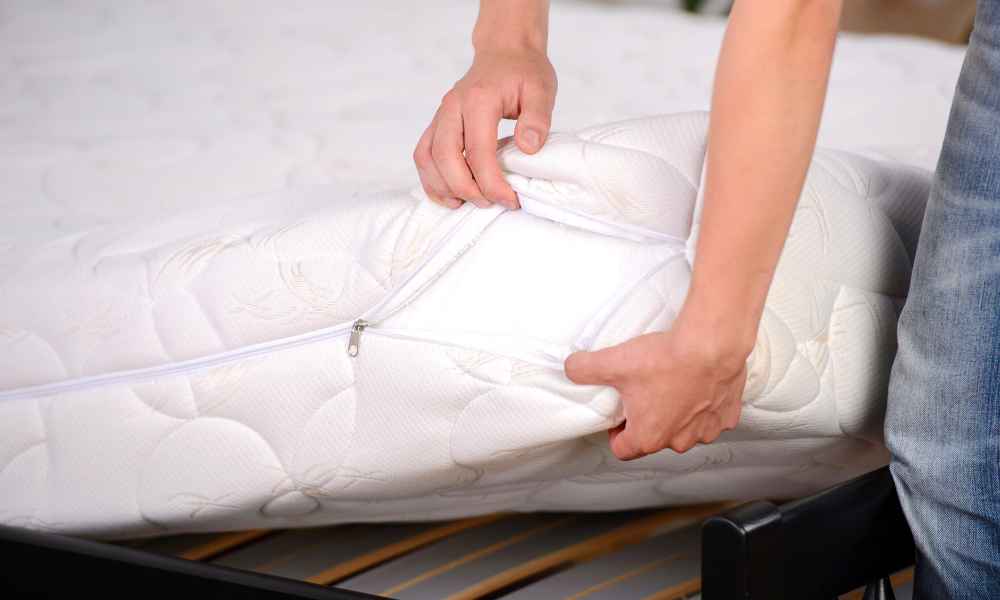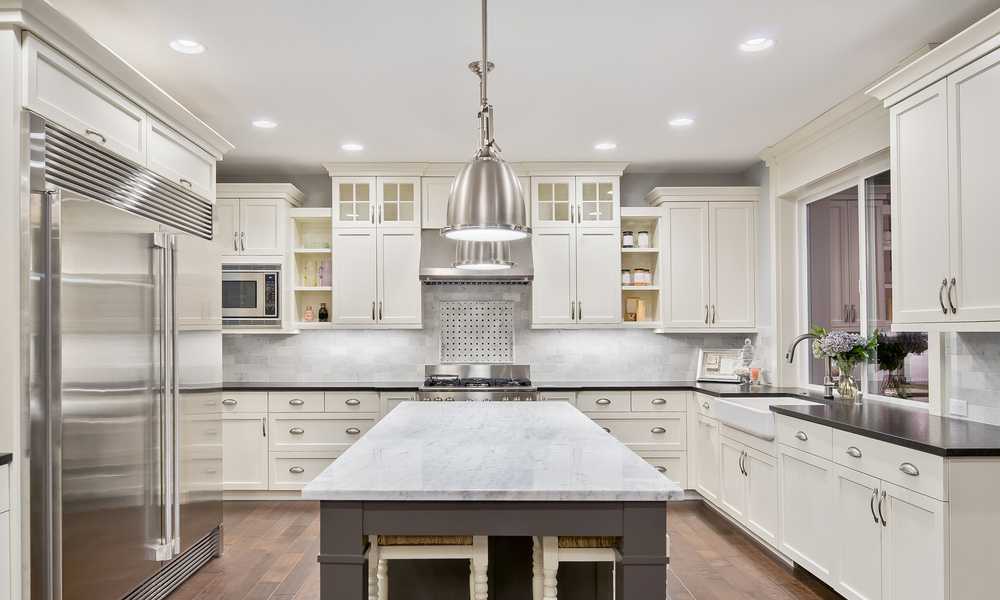Skillets Measured by their diameter from one inner edge to the opposite are pivotal tools in the kitchen universe. These pans, often termed frying pans, cater to an array of culinary jobs, from browning meats to stir-frying vegetables. While there are various aspects to consider such as depth, handle architecture, and composition, the skillet’s diameter remains the principal dimension. It provides a clear gauge of its capacity, aiding both professionals and home cooks in selecting the perfect skillet for their cooking endeavors.
What is the process for measuring the depth of a skillet?
Measuring the depth of a skillet involves turning the skillet on its side so that the handle is perpendicular to you, providing a clear view of its interior. With a measuring tape or ruler, place it vertically inside the skillet, ensuring it touches the bottom. Then, measure from the bottom of the pan to the top edge or rim. This measurement accurately reflects the skillet’s depth, which is an essential parameter to consider when choosing the right cookware for specific recipes and cooking tasks.
What are the key measurements typically used to describe skillets?
The key measurements typically used to describe skillets include their diameter, depth, and the length of the handle. The diameter is an essential measurement as it indicates the width of the skillet’s cooking surface, determining its capacity and suitability for various cooking tasks. The depth, or height, of the skillet’s sides also matters, as it affects its versatility – shallower pans are excellent for tasks like sautéing and stir-frying, while deeper skillets are more suitable for dishes that require liquids or a greater volume of ingredients. Additionally, the length of the handle is important for maneuverability and ease of use, as it determines how you can comfortably grip and control the skillet while cooking. These measurements collectively help consumers choose the right pan for their specific cooking needs.
Types of Skillets
Common materials (cast iron, stainless steel, non-stick, etc.)
Skillets come in a variety of materials, each with its unique properties. Cast iron skillets are known for their exceptional heat retention and even cooking, while stainless steel skillets are durable and resist staining. Non-stick pans have a coating that prevents food from sticking and makes for easy cleanup. Each material has its advantages and is suited to different cooking needs and preferences, making it important to choose the right one for your kitchen.
Sizes and shapes
Skillets are available in a range of sizes and shapes, catering to various cooking requirements. Common sizes include 8-inch, 10-inch, and 12-inch skillets, although larger and smaller options are also available. The shape of the pancan vary from the traditional round design to square or oval pans. The choice of size and shape should be influenced by the types of dishes you plan to prepare and the number of servings you intend to cook at once.
Handle types
The type of handle on a skillet can significantly impact its ease of use and safety. Skillets typically come with long handles or loop handles. Long handles are useful for larger pans and provide a secure grip, especially when transferring from the stovetop to the oven. Loop handles are more compact and can be more comfortable for smaller pans, but may not offer the same level of control. Additionally, some pans come with two handles for added stability when handling heavier dishes. The choice of handle type depends on personal preference and the skillet’s intended use.
Measuring a Skillet
Diameter measurement
When measuring a skillet’s diameter, it’s important to ensure accuracy for your cooking needs. Start by placing the pan on a level surface. Take a measuring tape or a ruler, and carefully measure the widest part of the pan. This should be from one edge to the opposite edge, passing through the center of the pan. The resulting measurement will be the skillet’s diameter. Accurate diameter measurements are crucial for selecting the right size pan for specific recipes, ensuring even cooking, and accommodating the number of ingredients you plan to use.
Depth measurement
Measuring the depth of a skillet is equally important, as it affects its capacity and suitability for different cooking tasks. To measure the skillet’s depth, turn it sideways so that the handle is perpendicular to you, giving you a clear view of the interior. With your measuring tape or ruler, place the tool vertically inside the pan, ensuring it touches the bottom. Measure from the bottom of the pan to the top edge or rim. This measurement reflects the skillet’s depth. Understanding the depth of your panis essential for determining its capacity, which can be crucial when following recipes that specify the required volume of ingredients.
Considerations When Choosing a Skillet
Cooking Needs and Preferences:
- Consider your specific cooking needs and preferences. Skillets come in various materials, such as stainless steel, cast iron, non-stick, and more. Each material has its own unique properties and is suitable for different cooking techniques.
- Think about the types of dishes you frequently prepare. For example, if you enjoy searing meats, a cast iron skillet is a great choice, while non-stick skilts are ideal for delicate foods like eggs and fish.
- Consider the skillet’s size and capacity based on the number of servings you typically cook for.
Stovetop Compatibility
- Ensure that the skillet is compatible with your stovetop. Some skillets may not be suitable for induction cooktops or certain other heat sources.
- Check the skillet’s flat bottom to ensure it sits evenly on your stovetop burners.
Oven-Safe Requirements:
- Determine if you need an oven-safe skillet. If you plan to use the pan for dishes that require both stovetop and oven cooking, make sure it can withstand the desired oven temperature.
- Look for skillets with oven-safe handles, or ones with removable handles if you want the flexibility to use them in the oven.
Weight and Ease of Handling:
- Consider the weight of the skillet. Heavier skillets, like cast iron, retain and distribute heat well but may be more challenging to handle. Lighter materials such as aluminum are easier to maneuver.
- Think about the handle design. Ergonomically designed handles are more comfortable to grip and reduce the risk of accidents.
- Assess your own physical capabilities and comfort in handling the pan, as this can impact your overall cooking experience.
Maintaining and Caring for Skillets
Cleaning methods
Proper cleaning is crucial to maintaining the quality of your skillets. For non-stick pans, use a soft sponge or cloth with mild soap and warm water to clean. Avoid abrasive scrubbers or harsh detergents that can damage the non-stick coating. When it comes to cast iron skillets, avoid soaking them in water. Instead, clean them with a stiff brush or non-metallic scrubber and hot water. Refrain from using soap on cast iron as it can strip away the seasoning, which provides the natural non-stick properties of the pan. For stainless steel skillets, a stainless steel cleaner or a mixture of baking soda and water can help remove stains and discoloration. Always scrub in the direction of the grain.
Seasoning cast iron skillets
Properly seasoning a cast iron skillet is essential for its longevity and non-stick performance. To season a cast iron skillet, begin by washing it with hot water and a brush to remove food particles. Thoroughly dry the pan with a towel or on the stovetop. Apply a thin layer of vegetable oil, shortening, or lard to the pan’s cooking surface, inside and out. Heat the pan in an oven at approximately 350-400°F (175-200°C) for an hour. This process allows the oil to polymerize, creating a protective layer. Afterward, let the pan cool in the oven. Your cast iron skillet is now seasoned and ready for use.
Storage considerations
Proper storage helps prevent damage and rust. Ensure your pan is completely dry before storing to avoid rust formation. If you stack skillets, place paper towels or cloths between them to absorb any residual moisture and prevent scratches. Store your skillets in a cool, dry place, and avoid stacking heavy items on top of them. If space is limited, consider hanging your pans from a pot rack or wall hooks, which not only saves space but also makes them easily accessible for your cooking needs.
Importance of Proper Skillet Measurement
Cooking efficiency
Proper skillet measurement is essential for cooking efficiency. Choosing a pan that matches the size of your recipe ensures even cooking. If the panis too small, overcrowding can lead to unevenly cooked food and longer cooking times. On the other hand, an excessively large skillet can result in heat loss and inefficient energy use. The right-sized skillet promotes even heat distribution, allowing for more efficient and effective cooking.
Recipe accuracy
Skillet size plays a critical role in recipe accuracy. Many recipes specify the skillet size to achieve the desired outcome. Using the wrong pan size can lead to deviations from the recipe, affecting the taste and texture of the dish. This is especially crucial in baking and pastry recipes, where precise dimensions are vital.
Safety concerns
Safety is paramount in the kitchen, and the size of the skillet is a safety consideration. Using a skillet that’s too small for the amount of food being prepared can lead to spills and splatters, increasing the risk of burns and accidents. Properly sized skillets help contain the ingredients and reduce the potential for kitchen mishaps. Overcrowding a small pan can also cause uneven heating, leading to hot spots and potential scorching or burning of food, which not only affects safety but also the quality of your cooking. In essence, selecting the right skillet size is fundamental for safe and successful cooking.
Conclusion
Understanding how skillets are measured is essential for anyone looking to purchase the right cookware for their kitchen. By knowing the size and capacity of a skillet, individuals can ensure that it meets their cooking needs and fits well on their stovetop. Additionally, being aware of the different measurement systems used for pans allows for easier comparison between different brands and models. Whether you prefer using inches or centimeters, it is important to familiarize yourself with these measurements to make an informed decision. So next time you’re in the market for a new pan, take the time to consider its size and capacity before making your purchase. Happy cooking!




